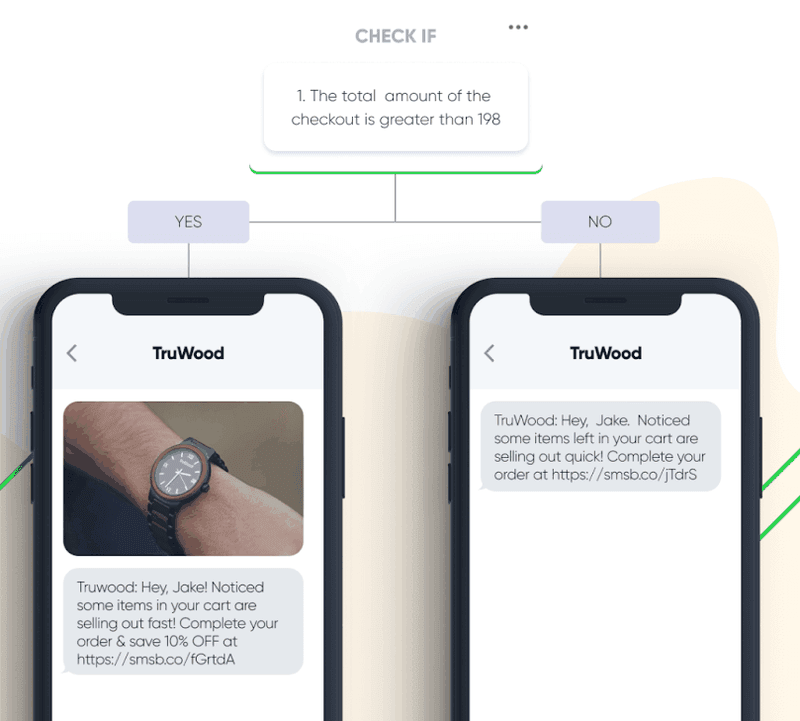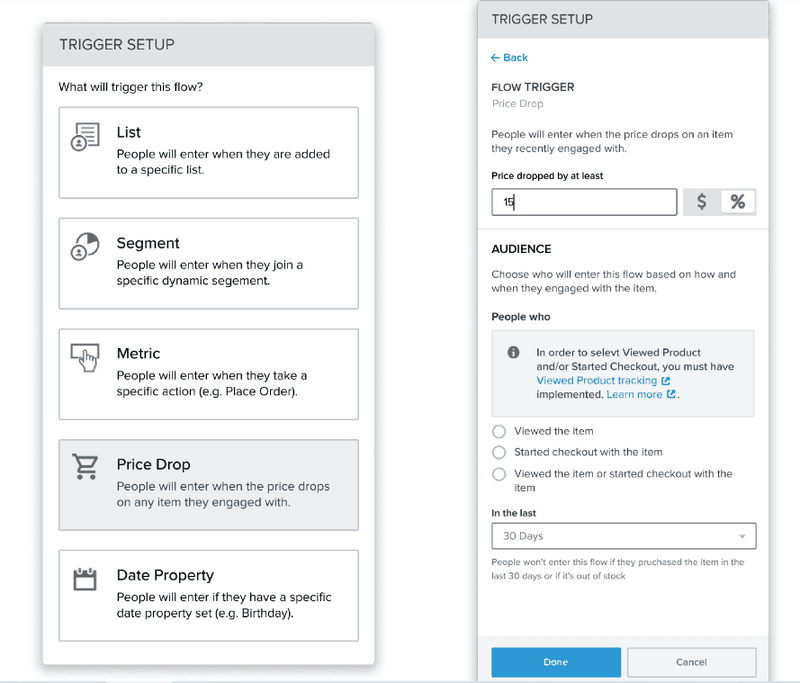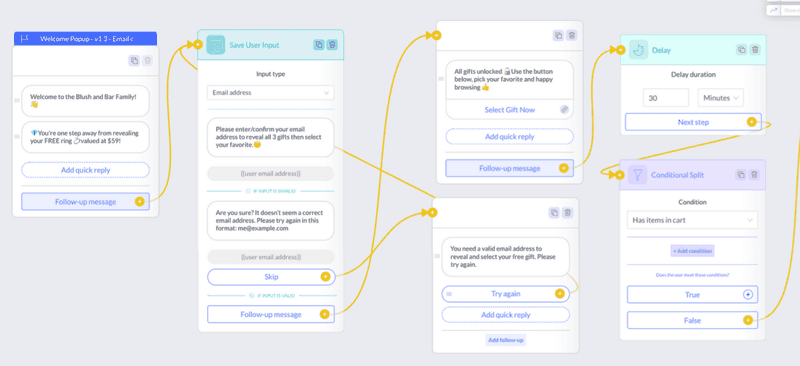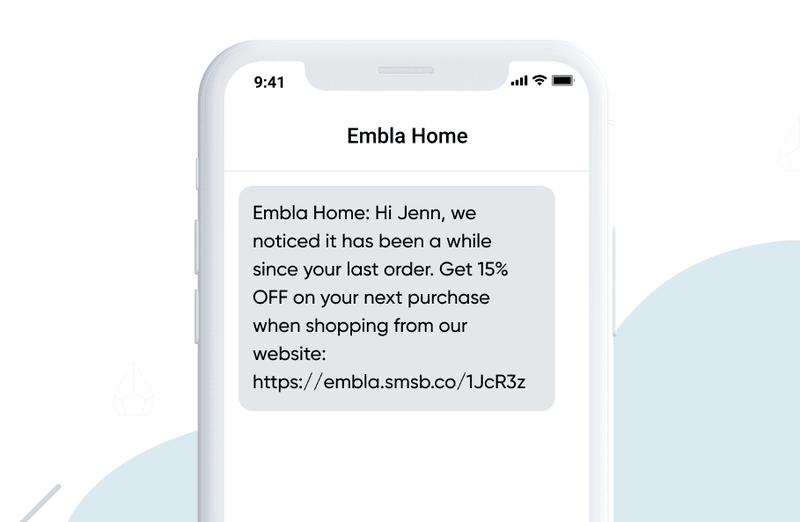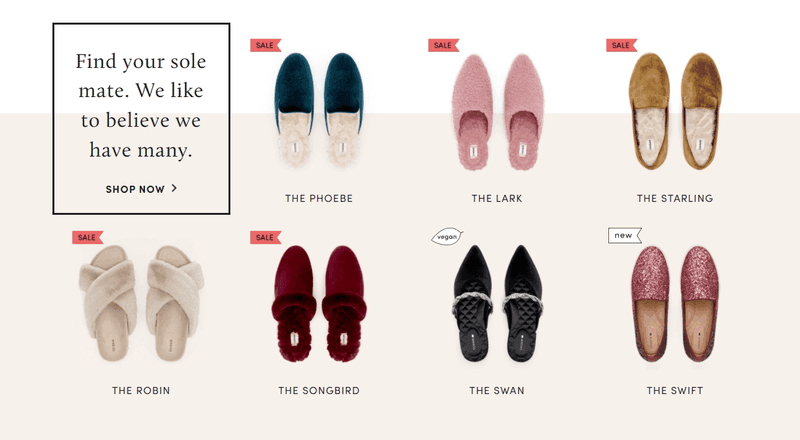8 eCommerce Marketing Automation Case Studies We Can All Learn From
Some of the best marketing automation studies. Learn about cart abandonment, email marketing, price tracking, popups, loyalty, and personalization.
Updated November 6, 2024

Marketing automation is among the most popular strategies used by eCommerce marketers today. It helps to create personalized experiences for every stage of the customer journey, maintain consistency across channels, and build strong customer relationships.
The right marketing automation tools save time, streamline the sales process, and boost leads. They also reduce human errors that can be pretty off-putting when you’re trying to build a cool brand image.
On average, 50% of companies use marketing automation and its total market size is expected to reach $8.42 billion by 2027. Quite clearly, this is a trend you simply can’t ignore.
In this blog post, we take a look at eight outstanding marketing automation case studies from popular eCommerce brands. These will give you the inspiration you need to create and run successful automated campaigns.
Let’s dive in.
1. Cart abandonment emails and messages
For eCommerce businesses, nothing is as frustrating as shopping cart abandonment. Research shows that 69.8% of customers abandon their carts and don't complete the purchase process.
Customers who add products to their shopping cart but don't make it to the checkout process are a source of lost revenue. So, set up cart abandonment recovery sequences using your marketing automation software. This will trigger an abandoned cart email (or an eCommerce SMS) whenever a customer leaves unpurchased products in their cart.
TruWood is a sustainable eCommerce company that sells watches made from bamboo, wood, and reclaimed lumber. To reduce the churn rate from cart abandonment, they leveraged SMS marketing and set up an abandoned cart flow using SMSBump.
But they didn’t go after every abandoned cart. Their marketing strategy was to segment carts by their value and focus more on recovering high-value carts.
Through their abandoned cart flow, they sent their target audience an image of the product they had left behind. They also provided a small discount and created a sense of urgency to encourage customers to complete their purchases.
As a result, they increased their click-through rate to 18% and got a 35X ROI.
2. Email marketing automation
Research shows that marketers who use segmented email campaigns see a 760% increase in revenue. That's why your email marketing strategy needs to be backed by proper customer segmentation and targeting.
Sending automated emails to an irrelevant target market will just be a waste of resources. If your content does not resonate with them, they won’t bother to open your emails or take the desired action.
Take this email automation case study from Draper James, for example. Every year, the eCommerce brand celebrates the birthday of its founder, Reese Witherspoon by offering customers a weekend-long sale in mid-March.
They use Retention Science for their email marketing. The tool alerted them about an issue with their domain reputation that was affecting their email open rates. So instead of sending mass emails to promote the upcoming sale, they decided to send personalized emails to customers who had subscribed, visited the site, or read an email in the last 90 days.
Once they hit certain goals, they expanded their target market to include customers with the same types of engagement in the last 180 days. This improved their lead nurturing strategy by serving more relevant content to their target audience.
As a result, they saw an increase in conversions and click rates. Their YOY revenue increased by 15.4% despite sending 48.7% fewer emails than the previous year.
3. Price tracking automation
Marketing automation tools can come in real handy for eCommerce brands that want to notify potential customers about a drop in their product prices. Here’s a great eCommerce case study that shows the impact of creating a personalized experience for customers based on behavioral segmentation.
Premier is an eCommerce brand that sells apparel, accessories, and skateboarding products. Its owner, Eric Blanding found the perfect solution for creating memorable customer experiences.
As a small business owner, it was impossible for him to notify customers manually about a drop in prices given how big the product catalog was. But the Price Drop Trigger automation made it very easy to send automated emails to customers who had shown interest in those products earlier. The ease of setting it up was pretty impressive.
Before fully committing to this marketing automation solution, Eric decided to test the waters first. In just a few days, he noticed a sharp increase in open and click rates — he saw a 12% click rate and a 73% open rate. He also observed an almost overnight increase in online sales.
4. Popups
Popup forms provide an easy way to capture the personal information of your online store visitors. You can use them to convert your prospects into customers through effective lead nurturing.
Popups are often used as barriers to gated content (or lead magnets) that visitors can access only after submitting their information. But forcing potential customers to fill out long forms isn’t a good idea. Make sure that your forms are short yet effective. They should also be well-placed and optimized for mobile devices.
Blush and Bar is an eCommerce store that sells affordable, minimalist, and sustainable jewelry. Its owners, Dan and Sarah realized that mobile devices were bringing in most of their traffic — courtesy of their social media ads.
Converting these leads was super important for them. But the problem was that the popups they were using weren’t optimized for mobile devices.
So they launched a simple, intuitive, and mobile-friendly popup that does not require users to type anything or fill out any forms. It enabled mobile visitors to submit their information or confirm their subscription with just a few taps. This simple marketing automation increased sales by a whopping $39,000 in the first month itself.
Pro tip: include user-generated content in your popups based on customer data. Display UGC that is most likely to catch the attention of your potential customer.
5. Retention and loyalty
A loyal customer base isn’t just a source of repeat business. They’re also great advocates who can help to spread positive word-of-mouth about your brand.
So, take special care of your loyal customers by giving them tailor-made offers and discounts, gifts and freebies, or loyalty program points that they can redeem on future purchases. Marketing automation software can help you identify high-value customers and run retention-focused campaigns.
Embla, an eCommerce brand specializing in home goods, used a holistic SMS marketing strategy to retain customers, build trust, and create amazing customer experiences. Here’s how.
Embla asked users to subscribe only at the final step of the buying process to make sure that they were genuinely interested in receiving their emails.
Then they ran a friendly, non-invasive re-engagement campaign using SMS automation to win back inactive customers with special offers and a personalized experience. It generated a 76% click-through rate and a 60% conversion rate. What’s even more incredible is that they saw an ROI of 531X having spent just $220 on the campaign.
6. Analytics
Getting a high volume of leads and conversions is great, but it’s very important to know where they’re coming from. Knowing their source will help you identify where you should focus your sales and marketing efforts for maximum growth.
Indicators like the lead score can be very useful for this purpose. That’s where marketing analytics comes in.
Fore Ladies Golf is an eCommerce brand that sells apparel for women golfers. Its founder Jessica Benzing moved the online store to BigCommerce in 2018 and immediately saw a jump in sales. The only problem was that she didn’t know where the traffic was coming from or who her customers were.
With Glew’s marketing automation software, Jessica was able to easily track and analyze her Google and Facebook ads, sales, inventory, so she could learn what was working and optimize what was not.
Plus, she was able to segment her customers and run targeted campaigns on discount shoppers and VIP customers to boost loyalty. All of this helped her focus on areas that mattered the most and craft a marketing strategy that delivered the highest ROI.
Pro tip: segment your audience based on the social media platforms they use to engage with your brand and map out some customer journeys. This will help you to tailor campaigns to your audience and improve your follow-up emails.
7. Personalized experiences
75% of customers are more likely to buy from brands that know them by name and recommend products based on their purchase history. That’s what builds personalized experiences and makes customers feel valued.
Here’s how the eCommerce footwear brand, Birdies implemented marketing automation to personalize the experiences for its customers. The company positions itself as a stylish, comfortable, and versatile shoe brand and has a really quirky tone of voice.
Birdies used Retention Science’s AI-based automation platform to uncover insights like:
- Which customers prefer comfort over style?
- Who are ready to buy?
- Which ones are thinking about leaving?
This allowed them to personalize their content and messaging and deliver their emails at the right times. For example, they learned that a $20 discount in exchange for referring a friend is a great customer retention strategy.
They also saw a 16% increase in conversion rate, an 11% increase in open rate, and a 42% decrease in their unsubscribe rate. Automation helped them increase conversions and revenue without worrying about the bottom line.
Pro tip: use your customer’s first-party data to display dynamic content based on their behavior. For example, you can display the exact products they were browsing, complementary products, their location, or other demographic information automatically.
8. Push notifications
Many marketers consider push notifications to be too disruptive for the user. But it’s undeniable that they have very high conversion rates and have been responsible for the success of many eCommerce brands.
Divatress is a retailer of wigs and other hair and beauty products. Fascinated by the appeal of eCommerce, the owner, Rob Lin abandoned their brick-and-mortar model and took the business online in 2012. What largely contributed to their success were SMS marketing and push notifications.
Using Omnisend’s marketing automation platform, they were able to bring in additional revenue through one-off promotions as well as targeted campaigns. They also noticed that their SMS subscribers grew at a much faster rate than their email subscribers.
Plus, they recorded an incredible conversion rate from their push notifications — 98% of those who clicked on them made a purchase. Their average revenue per push notification turned out to be 1151% greater than the average revenue from their promotional emails.
Pro tip: use different push notifications to target users at different stages of the marketing funnel. Display welcome messages, cart abandonment notifications, and promotional alerts.
Recap
Marketing automation is your one-stop solution for a host of different challenges. It not only helps you boost retention and loyalty but also provides useful data-driven insights to grow your business and improve your ROI from marketing.
Instead of getting overwhelmed by the large amounts of customer data you have, use the right data platforms and automation tools to make life easier for you. That doesn’t mean cutting corners — you still need a proper marketing plan and strategy. But when it comes to streamlining and managing repetitive tasks intelligently, marketing automation is clearly your best bet.
To review, here are the various marketing channels you should automate:
- Email marketing - cart abandonment, welcome flows, and customer segments.
- SMS -has the highest open and click-through rates.
- Push notifications - for cart abandonment and seasonal promotions.
- Popups & dynamic content - use data to personalize the user experience on your site, both on landing pages and on your blog content.
- Price tracking automation - automate price changes and personalize your emails.
- Retention & loyalty - increase referrals to improve your retention rates and customer engagement.
- Marketing analytics - use an automation platform to be able to analyze and dissect your data, for all of your marketing channels, in one place.
Head over to Mayple’s eCommerce case studies section to get some great ideas on marketing automation and get inspiration from some of the world’s largest brands.
